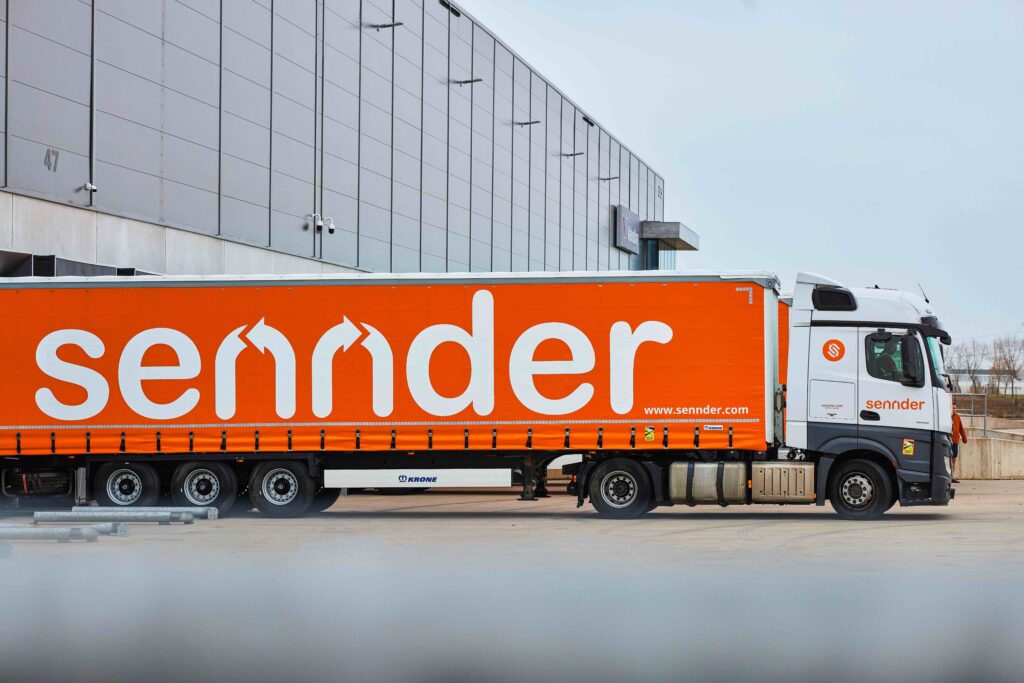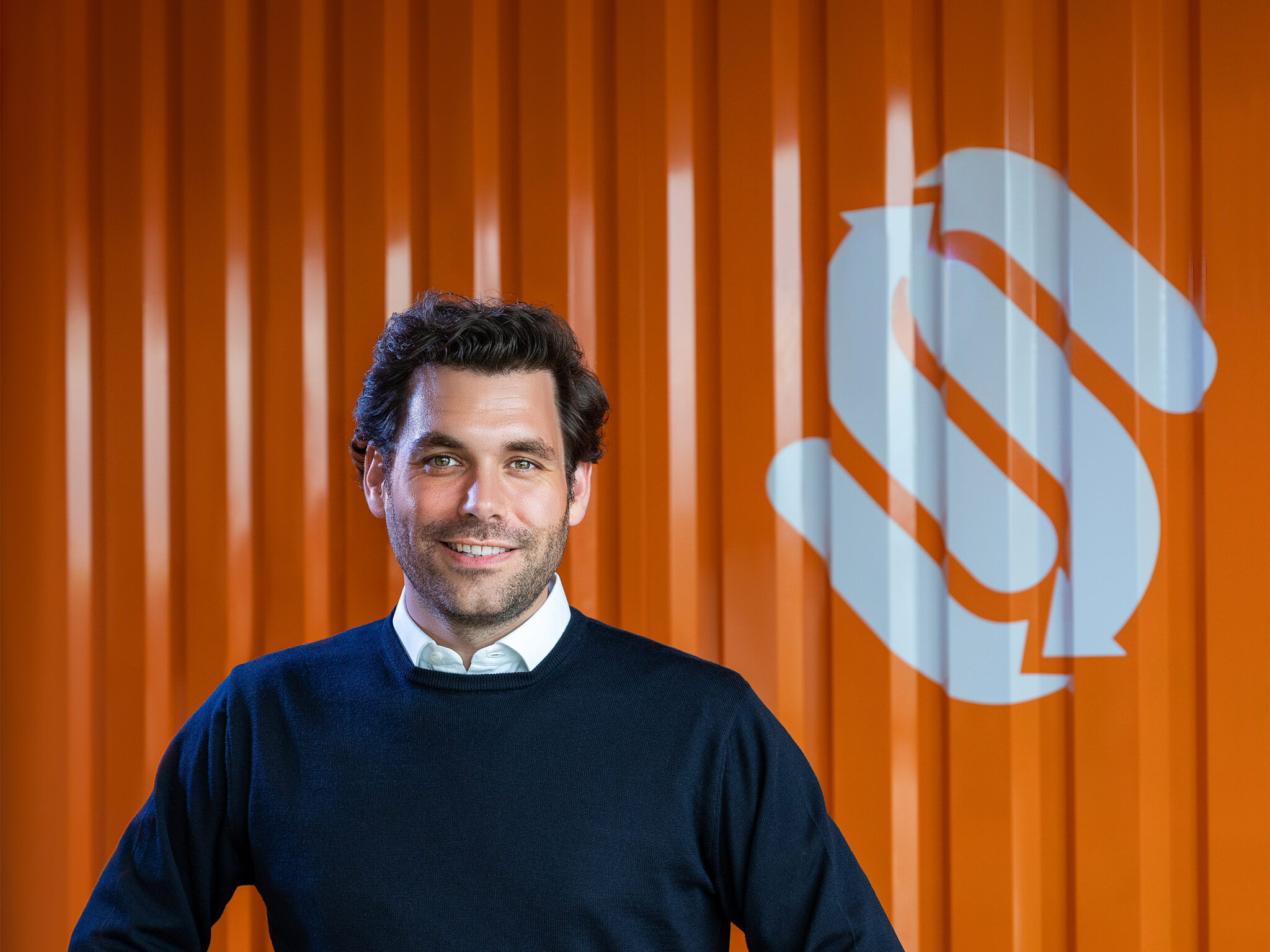Sending Freight Together
21st May 2024

Many hands make light work, and the saying holds true for big logistics contracts. David Priestman met with a digital freight forwarder making this happen across Europe.
David Nothacker is CEO and co-founder of Sennder, a Germany-headquartered company of 1000 employees and 11 European offices. The company’s forte is as a full truckload (FTL) third party logistics (3PL) broker for European road freight contracts. It acquired Uber’s European Freight Business in September 2020 in an all-stock transaction, with Uber acquiring a minority stake in Sennder as part of the deal. The acquisition began a strategic collaboration between the two companies to provide shippers with market-leading levels of service, efficiency and advances technologies across the USA, Canada and Europe.
“We handle the contracts and take the risk,” Nothacker informs me. “Clients come to us, we guarantee the price and break the transport work down from say a €200m agreement, like with have with the Italian Post, into small components with managed rates that many hauliers and transporters can operate between them.” By leveraging proprietary technology, Sennder is building an ecosystem.
Digital Freight Platform
“Uber Freight and Sennder are partners and mutual advisors, Nothacker explains. “We are continuously exploring opportunities for collaboration and synergies, particularly now that Uber Freight offers 4PL services in the European market that can be executed via our platform. We operate in different segments of the European market (4PL vs. 3PL), and on this basis we are able to advance our joint mission to fast forward road logistics.”
Sennder provides the compliance, delivery schedules and more on its digital freight exchange platform. This can either be for contract shipping or spot rates for ad-hoc, chartered transportation. The pitch is for companies needing to send freight to not have to choose between the dependability of an asset-based carrier (a traditional 3PL) or the agility of a digital TMS. Shippers access the connected carrier network enabling continental-wide shipping and forwarding to be divided-up by multiple local carriers.
Sennder has a large group of them on board, with 40,000 trucks connected to the platform transporting 50,000 loads a month. “While we are always open to new partners to increase our network density, our business focus is also on driving technology adoption with existing partners to maximize the benefits of our platform for carriers and shippers alike,” Nothacker states.

David Nothacker, sennder CEO
Similar networks have been put together in the palletised freight market, of course, and for less than truck loads. But Sennder claim originality in FTL and to be Europe’s largest digital freight forwarder. Scania invested in the company in 2017 and this has developed into the Swedish truck manufacturer being one of the largest shareholders as well as a strategic partner. “The transport industry is facing a revolutionary transformation through digitalization. With the knowledge and network of Scania, we will be able to accelerate our growth journey, with the ambition to offer the most customer focused and efficient service in the sector,” Nothacker tells me.
Investment in EVs
Scania is the electric vehicle (EV) partner for Sennder, with a joint-venture called JUNA. JUNA aims to advance large-scale e-truck adoption in Europe and to drive the transition towards a sustainable logistics industry, in line with the goals of the European Union’s ‘Green Deal’ to achieve climate neutrality by 2050. JUNA enables access to e-trucks, which are 2 to 3 times more expensive than diesel vehicles, and guarantees transport volumes by granting preferential access to spot and contract loads on Sennder’s digital platform. In doing so, JUNA reduces the risks of EV adoption for carriers, in particular the financial risks associated with high upfront costs and the uncertainty of the residual value.
70% of European hauliers have less than 10 trucks, but EVs are relatively expensive. “How do we persuade them to switch from diesel to electric?” asks Nothacker. His answer is via a pay-per-use model, per kilometre. “Truck owners don’t have to finance buying a lorry/truck. Our rate includes maintenance and insurance, though the EVs cannot be shared. If you don’t drive, you don’t pay.” Carriers benefit from driver apps, fleet management software, and individual reports and automated notifications, as well as from a higher utilization of their fleet, reducing costs and harmful emissions.
“With our shippers’ increasingly ambitious targets to reduce their Scope 3 emissions, we are seeing a constant increase in demand from our customers for green transportation,” Nothacker says. “In 2023, demand for green transports via our platform increased six-fold. This enables us to guarantee the use of EVs to both small and large fleet operators in our network. If set-up properly they’re no more expensive than diesel in terms of TCO, and they’re beneficial,” Nothacker continues.
“We get large EV contracts with the end-user shipper and sub-divide them among small haulage carriers – economies of scale.” Sennder compete, therefore, with 3PLs for contract volumes of at least €1 million Euro per annum. “The FTL business is slightly different, we work with larger shippers,” he concludes.
read more
sennder and Everoad Merge in Bid to Build Europe’s Largest Digital Road Freight Platform

